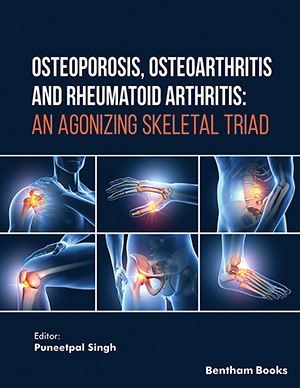
Abstract
Improved understanding of the molecular mechanisms leading to autoimmunity have resulted in advances toward the diagnosis, management, and treatment of rheumatologic diseases. Many of these mechanisms overlap with inflammatory disease states and cancer, where nanoscience is increasingly being applied for pharmacologic and diagnostic purposes [1-6]. Additionally, nanoscience has furthered the study of cellular interactions within the in situ environment, thereby increasing the understanding of these complex, multi-system disorders [1, 7-9]. This Hot Topics review series intends to provide an overview of nanoscience, as it pertains to rheumatology and immunology, highlighting emerging technologies applied to rheumatologic models and with the potential for human use. This mini-series has a particular focus on imaging and drug delivery applications pertinent to autoimmune conditions as well as reviewing the pharmacology, clearance, and biodistribution of nanomaterials in inflammatory conditions and by immune cells. Nanotechnology involves the synthesis and utilization of materials – including but not limited to metals, oxides, lipids, polymers -- in the nanoscale range (1 to 1000 nm). Nanomaterial composition as well as the size, shape, charge, and surface coating contribute to unique nanomaterial characteristics that can be used for a variety of biomedical applications [1, 10]. Each of these independent variables influences the application, biodistribution, metabolism, and as anticipated, bystander toxicity. In the current era of biologic and monoclonal antibody-directed therapy for autoimmune disease, clinical and radiographic markers are becoming less sensitive to detect subtle disease activity, and there is an increasing demand for improved diagnostic imaging techniques and contrast agents. Because of the large surface to volume ratio and ease of functionalization, nanoparticles are particularly well suited for advanced imaging [1, 11] and may fill this gap. In the review by Rogers et al., the authors cite several examples of novel nanoparticle-based imaging strategies to identify inflammation and rheumatic disease in the early, pre-clinical stages and even at the cellular level [7, 12, 13]. Coupled with targeted molecular markers, multimodal nanoparticles carrying larger payloads than traditional contrast materials have the ability to increase the sensitivity and specificity of disease monitoring while retaining the anatomic detail of traditional imaging. In addition to the advantages nanomaterials provide as novel contrast agents in imaging, they can also be utilized in vaccination strategies or as drug carriers for targeted delivery to tissues [1, 14, 15]. This technology may improve upon current treatments or could provide therapies for some rheumatic illness, such as systemic lupus erythematosus or scleroderma, for which there are limited therapeutic options. In the review authored by Henderson and colleagues, a wide range of nanoparticle platforms including varied material composition and conjugated strategies are described as approaches to control the processes of drug release, targeted delivery, and degradation [16-19]. There is precedence for FDA approval of nanoparticle-based drug delivery for the treatment of infection and cancer in humans, and in some instances, this has decreased systemic toxicity while improving efficacy [20]. This same balance between targeted therapy and untoward side effects will need to be applied to medications designed for the rheumatic illnesses as the field advances. Many nanomaterials in the living organism are phagocytized by cells of the reticuloendothelial system, and in particular, these include the monocyte/macrophage cellular lineage [21]. In the review by Song et al., the authors discuss the complex interactions between nanoparticles and immune cells since this interplay can affect particle distribution, clearance, and potentially lead to off-target effects such as immune stimulation. Ultimately, these relationships between nanoparticles and immune system activation versus suppression will need to be clarified if their applications extend into treating primary disorders of the immune system such as autoimmunity. In Rheumatology, the role of nanoparticle based imaging, treatment-derived strategies, and pharmacokinetics and biodistribution has largely been conducted in preclinical models. Further in depth studies are needed to translate these exciting findings from animals to patients with rheumatologic or autoimmune conditions. Although some extrapolation can be made from the cancer and infectious disease arena, the chronicity of rheumatic disease will make clarifying the potential effects of nanomaterials in both short- and long-term applications germane to those patients as well as to others with chronic illness.
 29
29









